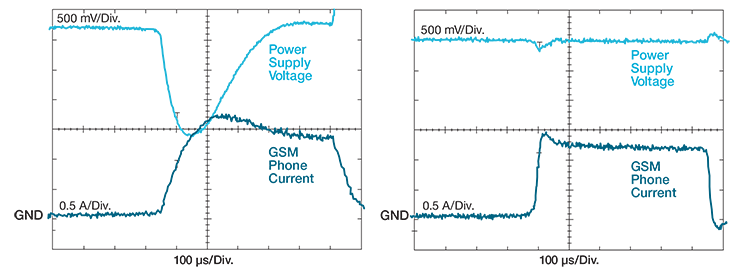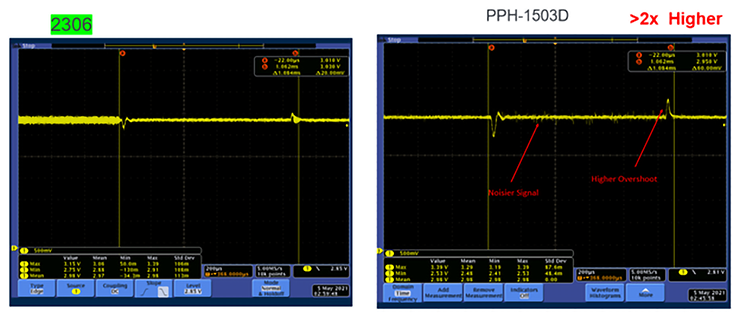

New innovations in technology have allowed us to begin adopting 5G communication network which allows users to share data at a pace that is 3 to 5 times faster than that of 4G (J.P.Morgan, 2021). By 2030, the 5G market is expected to exceed $180 billion just in North America alone (J.P.Morgan, 2021). As more users begin to switch to 5G, the demand for more wireless devices has increased and so has production to meet the demand.
In order for companies to get these devices on the market and into the hands of consumers, they must undergo simulated tests using reliable testing equipment. Keithley Instruments’ Dual Channel 2306 Battery/Charger Simulator was designed specifically for development and test applications of portable, battery-operated products, such as cellular phones, wireless devices, and wearables. This precision power supply has an ultrafast transient response so it can have the output characteristics identical to an actual battery. This supply employs a unique variable output resistance so the voltage output can emulate a battery’s response. It provides a stable voltage output, even when a device-under-test (DUT) makes the rapid transition from the standby (low current) state to the RF transmission (high current) state. In addition, it can monitor DUT power consumption by measuring both DC currents and pulse load currents. The 2306’s battery-simulator channel can be programmed to operate like a discharged rechargeable battery, sinking current from a separate charger or from the 2306’s charger/simulator channel.
The battery-output channels of the 2306 are designed to simulate the output response of a battery. This capability, combined with their fast transient response, makes it possible to power the device during testing in exactly the same way as a battery will power the device during actual use. The image below compares directly compares the output of a lithium-ion battery and that of the 2036 battery emulator.
During production testing, supplying power to a device that undergoes large, instantaneous load current changes can be extremely difficult. Changes like this force a conventional power supply’s output voltage to fall instantaneously. When the power supply’s control circuitry senses the error condition (the difference in voltage between the programmed level and the actual level), it attempts to correct or restore the voltage to the programmed level. During this time, the voltage will fall or droop substantially, with the amount of the droop depending on the size of the load current change. The recovery time depends on the transient response of the power supply’s control loop. Conventional power supplies have transient voltage drops of >1 V when confronted with load current changes of up to 1000% and take up to a millisecond to recover to the programmed voltage. For portable devices such as cellular phones that operate at full power for only short intervals, the full power event is over before the conventional power supply can recover. The graphs below show the difference between a conventional power supply and the 2306’s fast, transient response time.

The 2306 is still best in class with providing a transient response. We are still beating the competition’s performance when it comes to transient recovery. The scope captures below show the 2306 versus the GW Instek.

Additionally, the 2306 is based on Keithley’s expertise in low current measurement technologies, so it is well suited for making fast, accurate measurements of sleep and standby mode currents. It is the best in class and performance. With 100 nA resolution and 0.2% basic accuracy, it provides the precision needed to monitor the low sleep mode currents of both present and future battery-operated products.
The 2306 can sink up to 3 A continuously, just like an electronic load. This allows these supplies to simulate a discharged rechargeable battery for use in testing the performance of battery chargers or battery charger control circuitry. The 2306 Battery/Charger Simulator combines the functionality of both the charging current source (the charger channel) and the current sinking to simulate the recharging of a discharged battery (the battery channel) in a single enclosure. This can be seen in the image below.

With the introduction of the model 2306-LAN, customers are now able to take advantage of the ethernet communication over the obsoleted GPIB connection. The new addition of the LAN port on the 2306 Battery/Charger Simulator adds value to any bench/production build out by saving time and cutting costs. This new feature will allow Keithley Instrument’s 2306-LAN to continue to support testing for wireless devices across a variety of industries in future applications.
2306-LAN enhancements:
- The 2306-LAN enables LAN communication through the added RJ-45 connector on the rear.
- Version D04 is the initial firmware release for the Model 2306-LAN and enables LAN communication, IP configuration, TCP server, UDP server and DHCP functionality.
- Providing the 2306-LAN Configuration tool:
- set up the 2306-LAN IP address, netmask, gateway, and port from a PC.
- Firmware upgrade functionality to 2306-LAN from a PC.
Reference:
J.P.Morgan. (2021, May 24). The Future of 5G Adoption. Retrieved from Insights/Research: https://www.jpmorgan.com/insights/research/future-of-5g-adoption


